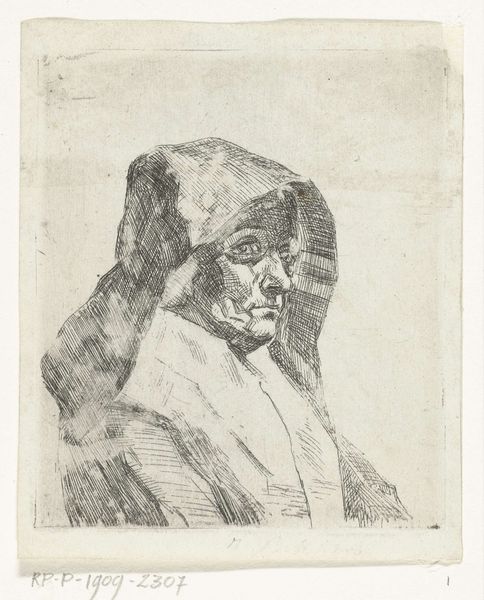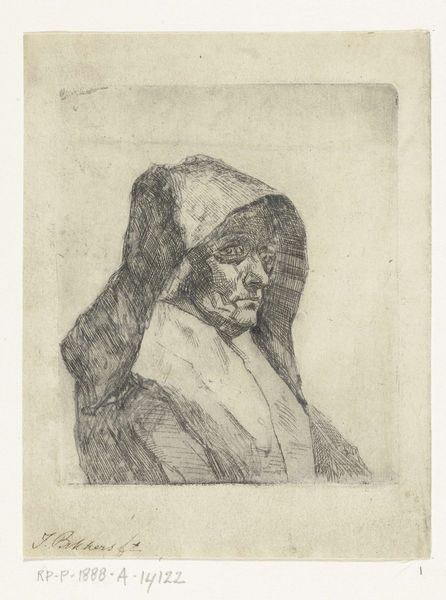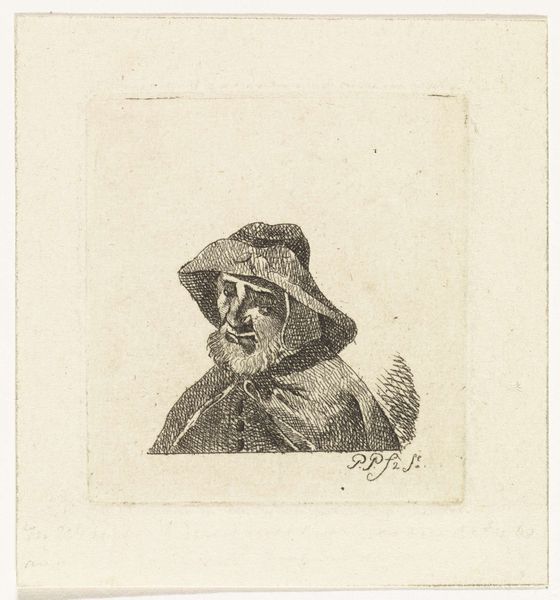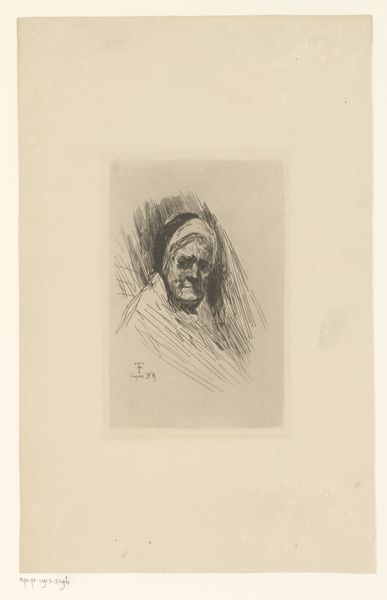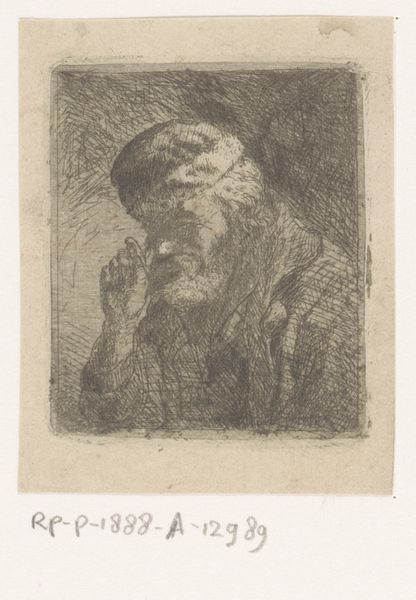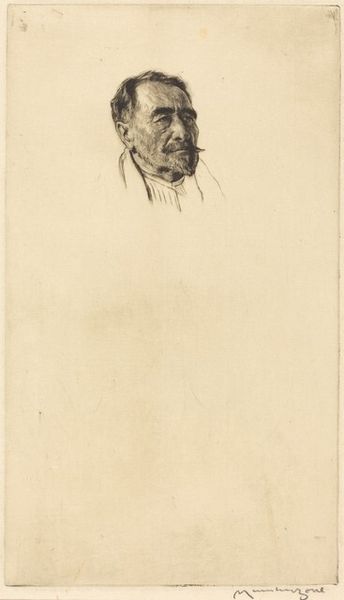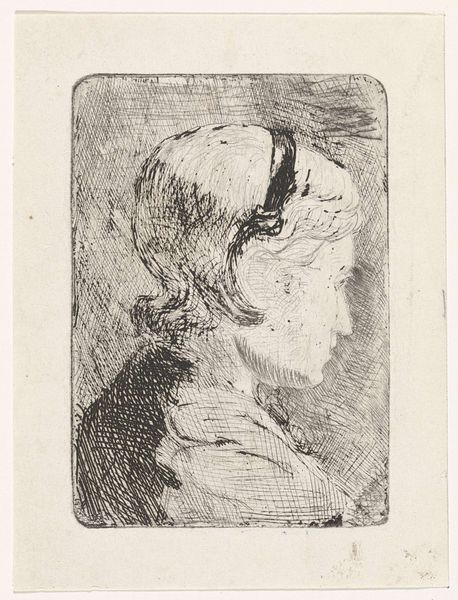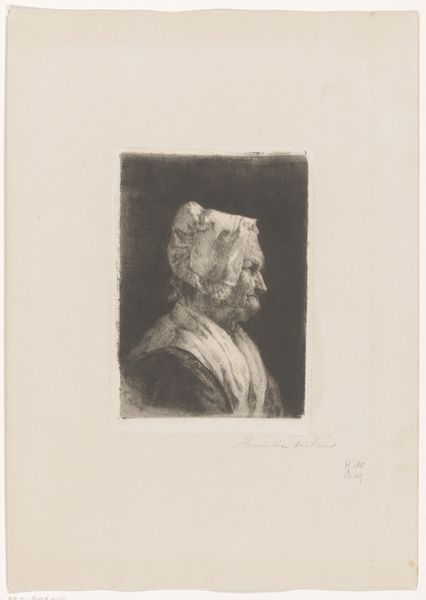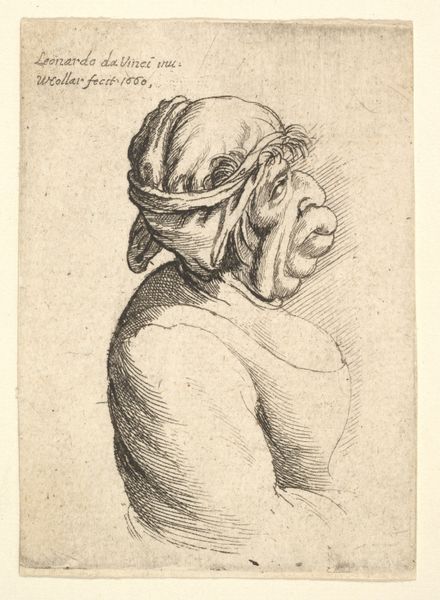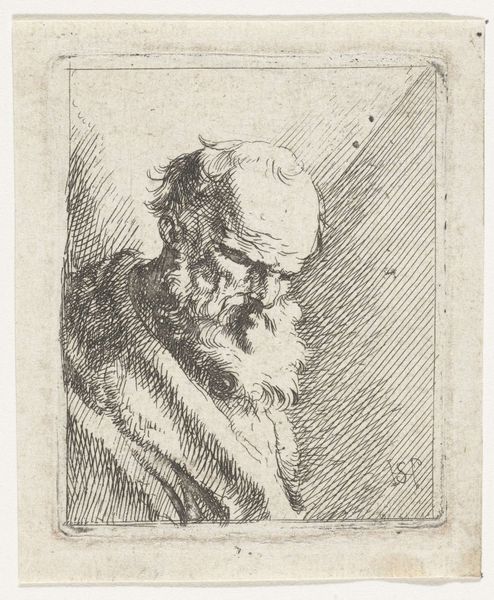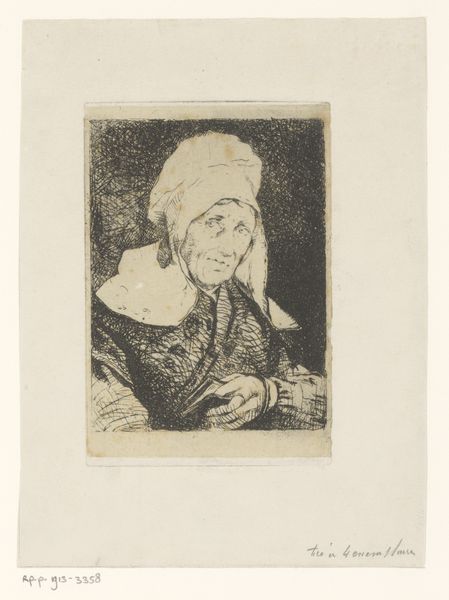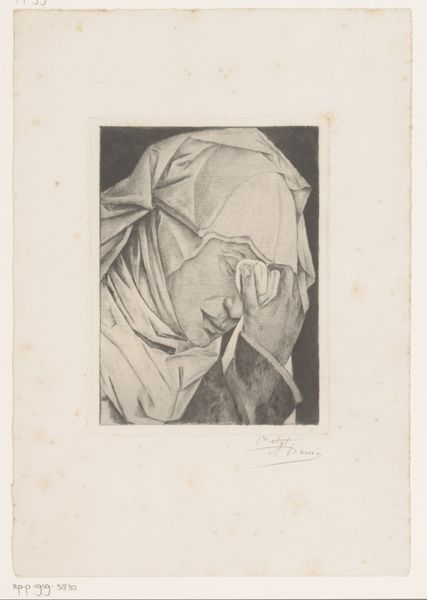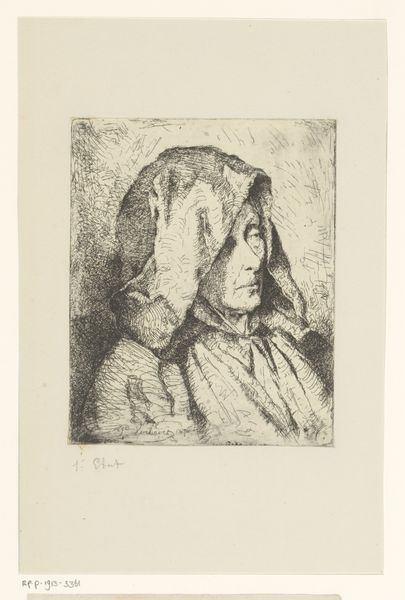
print, etching
#
portrait
#
medieval
# print
#
etching
#
figuration
Dimensions: height 93 mm, width 78 mm
Copyright: Rijks Museum: Open Domain
Curator: Welcome. Today, we're looking at "Buste van vrouw met muts," or "Bust of a Woman with a Cap," an etching created sometime between 1840 and 1876 by Jan Bikkers. Editor: The first thing that strikes me is the woman's intense gaze. It feels like a study in quiet strength or even resignation. And the use of line creates such a dramatic sense of shadow, deepening that mood. Curator: It’s intriguing how Bikkers, likely drawing from or referencing earlier medieval styles, employs etching—a technique readily lending itself to the distribution of images within a certain socio-political climate—to perhaps portray an allegorical figure? Given the revival of medievalism throughout Europe at this time, one could also consider this artwork from a post-enlightenment philosophical framework. Editor: An allegory perhaps of female experience or resilience under duress, given her heavy clothing and the somber light, or are you talking about power dynamics? There’s something quietly radical, a subversion, in giving such presence to a perhaps otherwise overlooked individual through figuration. Is she meant to represent a demographic of people? Curator: I think you've pinpointed something essential about representation. The fact that Bikkers, working during a period of intense social change, chose to portray a woman who's simultaneously cloaked and revealed raises compelling questions. How does the very act of looking, of creating this image, engage with the viewer's expectations of gender and power? We need to also ask ourselves how this fits into broader narratives of national identity and the way cultural institutions participated. Editor: Absolutely. It’s like the artist is presenting the woman not as some pre-conceived, aestheticized, ornamental representation, but challenging our understanding of medievalism itself in relation to contemporary views about gender. The directness in her gaze demands some kind of interaction from the viewer, to engage with the subject. The social and cultural significance really does become apparent under consideration, even though its physical presence might seem insignificant as a printed medium. Curator: Exactly. We often discuss the grand narratives of art history, but it’s in these more intimate and seemingly simple works that we find a reflection of a society grappling with evolving ideas and social change. It brings to the forefront how art becomes a public forum to engage in the politics of visual imagery and question historical tropes about identity. Editor: Precisely. Art invites ongoing conversation.
Comments
No comments
Be the first to comment and join the conversation on the ultimate creative platform.
